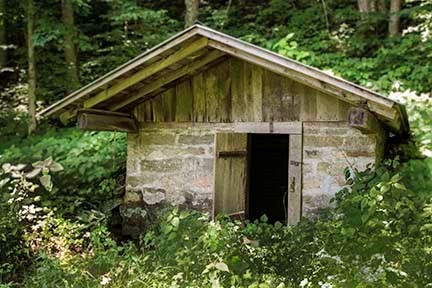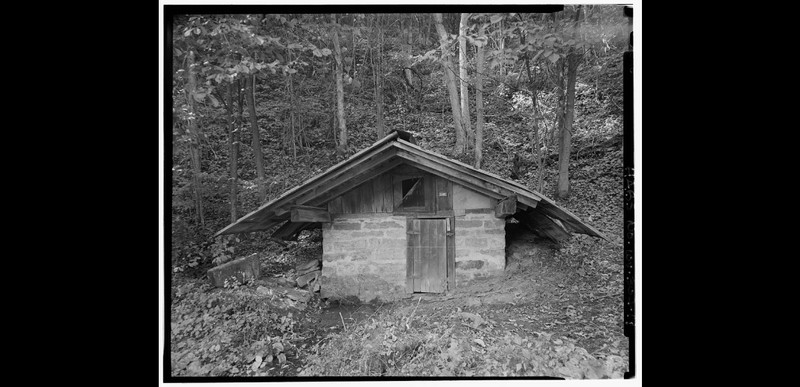Springhouse
Introduction
Text-to-speech Audio
The springhouse was one of the most vital buildings on Trump-Lilly Farm. One of the first criteria in choosing a place to settle was ensuring access to plentiful clean water. When a natural spring was found at this location, a building to protect it followed soon after. In contrast to many buildings on the farm, the springhouse has rough stone masonry walls. Between the construction materials and natural spring, the building was cool year round, making it a perfect place to store jellies, butter, and dairy products. The springhouse was also where laundry was washed before the completion of the wash house.
Images
The springhouse.

Historic American Buildings Survey photo of the structure.

Sources
McGowan, Leigh. Trump-Lilly Farm, National Register of Historic Places. January 31st 1990. Accessed June 3rd, 2021. http://www.wvculture.org/shpo/nr/pdf/raleigh/90001640.pdf.
Stahlgren, Lori et al. Historical Archaeological Survey: New River Gorge National River and Gauley River National Recreation Area. Lexington, KY. Kentucky Archaeological Survey, 2007.
Trump-Lilly Farm, Hinton, Summers County, WV, Historic American Buildings Survey. Accessed June 2nd 2021. https://www.loc.gov/resource/hhh.wv0531.photos?st=gallery&c=160.
Trump-Lilly Farm, National Park Service. January 26th 2021. Accessed June 3rd, 2021. https://www.nps.gov/neri/learn/historyculture/trump-lilly-farm.htm.
Trump-Lilly Farm Walking Tour, National Park Service. September 24th 2020. Accessed June 3rd, 2021. https://www.nps.gov/neri/learn/historyculture/trump-lilly-farm-walking-tour.htm.
McLaughlin, Louise. “The Springhouse.” National Park Service. Accessed June 3rd 2021. https://www.nps.gov/neri/learn/historyculture/trump-lilly-farm-walking-tour.htm.
“Trump-Lilly Farm, Hinton, Summers County, WV.” Historic American Buildings Survey. Accessed June 3rd, 2021. https://www.loc.gov/resource/hhh.wv0531.photos/?sp=20.
